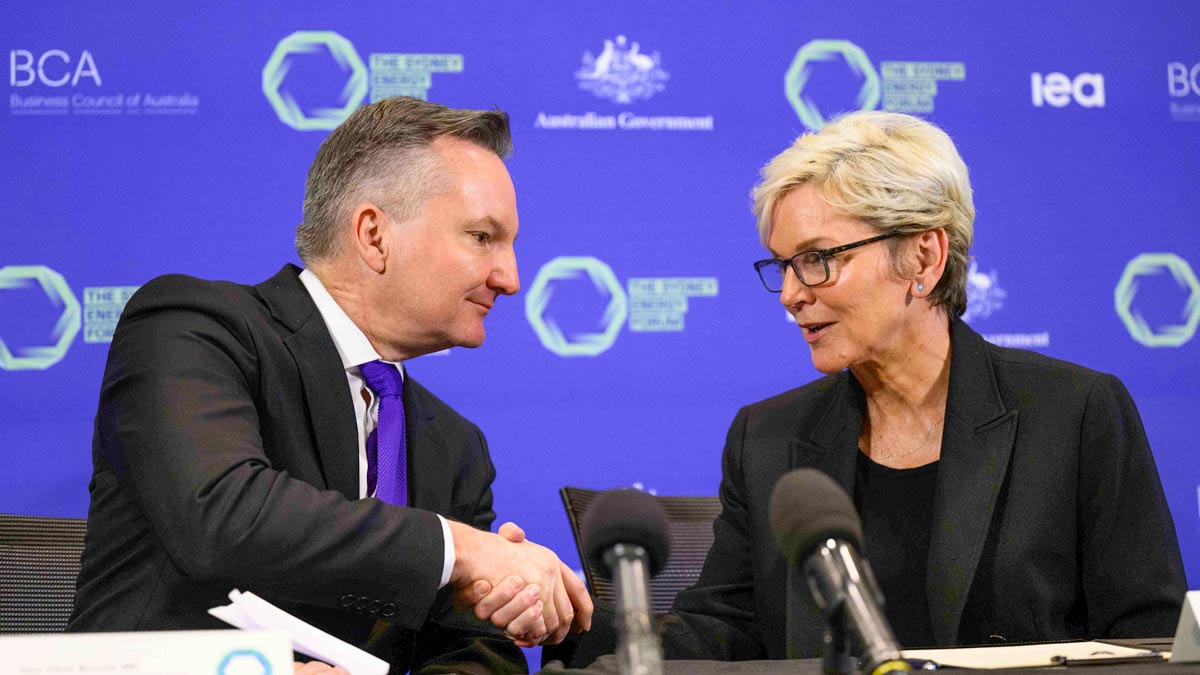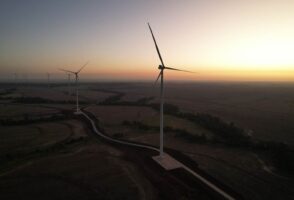Australia and the United States will cooperate on the development of clean energy technologies and establishing new clean energy supply chains, in a bid to drive progress toward zero net emissions targets and to counter the influence of China.
Federal climate and energy minister Chris Bowen signed the Australia-U.S. Net Zero Technology Acceleration Partnership alongside US energy secretary Jennifer Granholm at the Sydney Energy Forum on Tuesday.
Under the agreement, Australia and the United States will cooperate on the development of new clean energy technologies and strategies for transforming their respective transmission infrastructure.
“This partnership is a huge milestone in ramping up the US and Australia’s shared commitment to ambitious climate action and energy security,” Bowen said.
“It prioritises not just development but the deployment of the critical technologies that will underpin economic opportunity in the energy transformation of our two countries.”
The agreement will sit alongside a Memorandum of Understanding signed on Tuesday between Australia’s CSIRO and the United States National Renewable Energy Laboratory (NREL) to cooperate on clean energy technology research.
Federal energy minister Chris Bowen is announcing the signing of a cooperation agreement with the United States, co-signed by US energy secretary Jennifer Granholm, including partnerships between the CSIRO and NREL on energy transition technology. #SydneyEnergyForum pic.twitter.com/81WAQ0Yfw4
— Michael Mazengarb (@MichaelM_ACT) July 12, 2022
Areas flagged for cooperation include long-duration energy storage technologies, grid integration innovations, hydrogen production and carbon capture and storage.
The MoU comes one day after the CSIRO released the 2022 version of its annual GenCost report, which underscores the role of “integrated” wind and solar – including the cost of storage and transmission – as already by far the cheapest source of new electricity generation in Australia.
But the push is on to reduce the costs of renewable generation technologies even further, including through Australia’s federal stretch target to cut the levelised cost of solar energy by another 70 per cent.
CSIRO chief Larry Marshall said on Tuesday that the new agreement built on the existing collaboration between the two scientific organisations on solar, energy resilience and the Global Power System Transformation Alliance.
“It aligns closely to Australia’s national interests, including in hydrogen and grid resilience as well as CSIRO’s major research missions to help end plastic waste and build Australia’s clean hydrogen industry,” Marshall said.
“Importantly, through CSIRO’s shared national labs, it paves the way for new opportunities for Australian science institutions to partner with US national labs and industry to lead on cutting-edge research that will lower the cost of net zero energy technologies at a global scale.”
NREL’s chief research officer Peter Green said that under the agreement, CSIRO and NREL would initially focus on four areas of strategic importance to Australia, including hydrogen.
“Together we will leverage the significant intellectual, research, and infrastructure capabilities of both institutions to address some of the most pressing challenges associated with achieving the global energy transition,” Green said.
The Australia-US collaboration is the culmination of a major diplomatic effort for the new government, which is lining up several potential cooperative agreements with Asia Pacific allies.
The agreement is, to some degree, aimed at countering the market dominance China has developed in the supply chains for technologies like solar, batteries, wind turbines and electric vehicles.
China has established a particularly dominant market share for solar panels, which has raised a potential energy security issue given the more adversarial relationships the countries have had in recent years.
“China has a big foot in a lot of the technology and supply chains that could end up making us vulnerable if we don’t develop our own supply chains,” Granholm said.
“And so, therefore, from an energy security point of view, it is imperative that nations that share the same values to develop our own supply chains, not just for the climate, which of course is very important, but for our own energy security.”
In a subsequent address to the forum, Bowen said that acting on climate change was in the economic and environmental interests of all countries, but the Russian invasion of Ukraine had underscored the national security benefits of shifting away from fossil fuels.
“Acting on [the challenges of climate change] is obviously in our environmental best interests. But acting is also in economic and security best interests,” Bowen said.
“The current global geopolitical crisis highlights – this is the illegal and unacceptable invasion of Ukraine – the devastating human impact and has had devastating impacts on energy supply chains around the world.”
Bowen said that similar agreements with other Asia Pacific partners are already in the works, flagging a potential cooperation agreement with India on solar photovoltaic research.
“The partnership is a commitment to make climate change a centrepiece of our alliance with the US. Similar partnerships are evolving between Australia and countries across our region,” Bowen said.
“With India, Australia is working together to scale up the manufacture and deployment of solar PV and electrolysers.
“Tomorrow, the [Indian minister of new and renewable energy, RK Singh] and I will make a joint visit to the University of New South Wales – a centre of Australia’s expertise in solar photovoltaic research.”
Following the signing of the Australia-US partnership agreement, Granholm said it was important for countries like Australia and the United States to establish access to their own supplies of clean energy technologies – to avoid a situation where access evolves into a political or diplomatic football.
Granholm – who previously served two terms as the Governor of Michigan – said the partnership would help Australia and the United States establish themselves as leading global exporters of clean energy technologies.
“The Australia-U.S. Net Zero Technology Acceleration Partnership reflects our nations’ joint commitment to grow our energy capacity and obtain the full advantages of affordable, diverse and secure clean energy,” Granholm said.
“With today’s partnership, our two countries will work together to unlock critical advances in long-duration storage, grid integration, clean hydrogen, direct air capture, and critical minerals and materials – providing an essential opportunity to export the innovations that will accelerate the global clean energy transition.”










